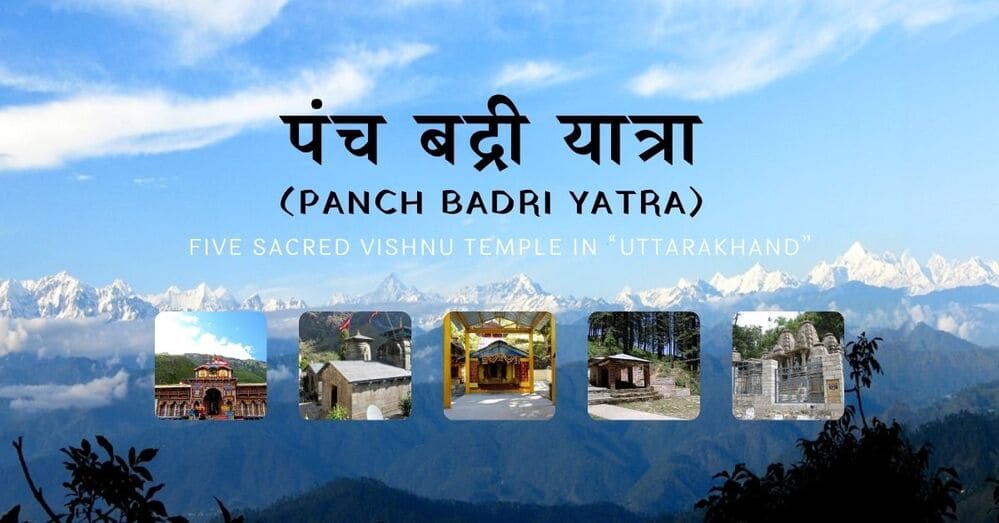Explore the divine journey of Panch Badri in Uttarakhand, a sacred pilgrimage circuit featuring five temples dedicated to Lord Vishnu.
Nestled amidst the majestic peaks of the Garhwal Himalayas in the state of Uttarakhand, India, lies a sacred pilgrimage circuit known as Panch Badri. This spiritual journey takes travellers through five ancient temples dedicated to Lord Vishnu, each with its significance and charm. From scenic vistas to profound religious experiences, the Panch Badri circuit offers a unique blend of adventure and spirituality, attracting devotees and adventure enthusiasts alike. Join us as we embark on a journey to discover the essence of Panch Badri.
The Legend of Panch Badri:
Uttarakhand, the Himalayan state of India, is renowned across the nation and the globe as the “Land of the Gods,” or Devbhoomi. According to the Skanda Purana, the Garhwal region of Uttarakhand is referred to as Kedarkhand, where Lord Shiva holds sway in the majestic Garhwal Himalayas. With the advent of Lord Vishnu in this region, Vaishnav Khand in Badrikashram, situated within Kedar-khand, also attained sacred status as a pilgrimage site.
According to Hindu mythology, the origin of Panch Badri dates back to the time of the Mahabharata. It is believed that after the Kurukshetra War, the Pandavas sought redemption for their sins related to the war. To absolve themselves, they embarked on a pilgrimage to seek the blessings of Lord Vishnu. During their journey, they established five sacred temples dedicated to Lord Vishnu, which came to be known as the Panch Badri.
The Panch Badri (A Group of 5 Badris):
In Uttarakhand, the Raj Badri temple stands as the principal and largest pilgrimage site dedicated to Lord Vishnu, revered as Lord Badrinath. However, alongside this prominent temple, there exist four other smaller Badri temples also devoted to Lord Vishnu. These temples collectively form what is known as the Panch Badri, representing five distinct manifestations of Lord Badrinath. These sites hold immense significance and sanctity for Hindus, drawing thousands of devotees annually. Among them, Badri Vishal, located at the chief shrine of Lord Badrinath, holds particular reverence. Below, you’ll find detailed information about each of the Panch Badri temples, offering valuable insights into these sacred sites. Apart from the primary Badrinath temple, the other four auxiliary Badri temples:
1. Badrinath: The Journey Begins
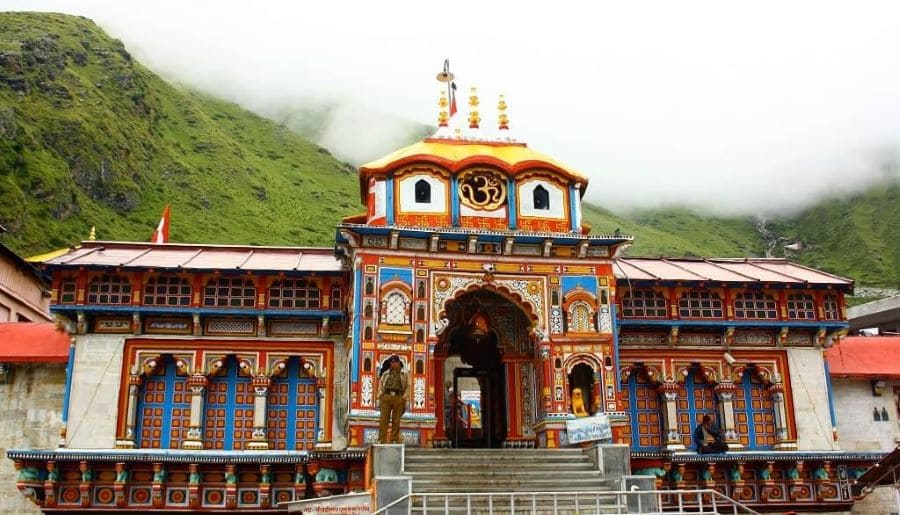
Location: Badrinath, Joshimath, Chamoli District, Uttarakhand
The journey of Panch Badri commences with the iconic Badrinath Temple, situated in the town of Badrinath. Nestled along the banks of the Alaknanda River, this temple is one of the holiest shrines dedicated to Lord Vishnu. Surrounded by snow-capped peaks and lush greenery, the Badrinath Temple exudes a sense of tranquillity and divinity, making it a must-visit destination for pilgrims and tourists alike.
Traditionally, Lord Vishnu at Badrinath is revered by the Namboodiri Brahmins from Kerala. Only the Rawal, who hails from the southern region or belongs to the Choli or Mukani caste, is permitted to perform worship at Badrinath. The Rawal is prohibited from marrying and is required to possess expertise in the Vedas.
2. Yogadhyan Badri: The Meditative Abode
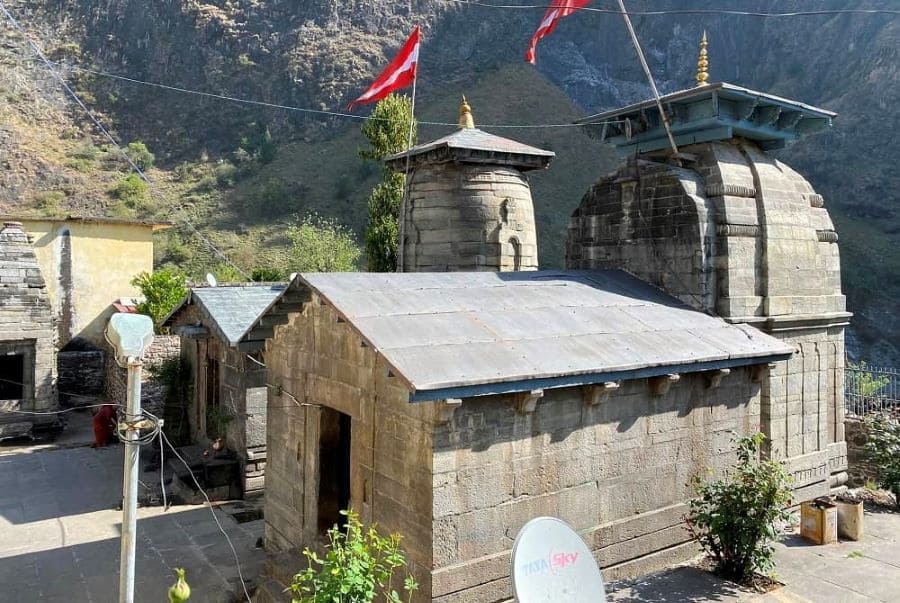
Location: Pandukeshwar, Joshimath, Chamoli District, Uttarakhand
The second stop on the Panch Badri pilgrimage is Yogadhyan Badri, located in the serene village of Pandukeshwar. This temple is believed to be the place where King Pandu, the father of the Pandavas, meditated to seek redemption. Surrounded by dense forests and pristine streams, Yogadhyan Badri offers a peaceful retreat for those seeking solace and spiritual enlightenment.
Located near Hanuman Chatti and Govind Ghat, this temple derives its name from the serene posture of its presiding deity, Lord Vishnu, who appears deeply absorbed in meditation. Situated at an altitude of 1,920 meters above sea level, the village is named after Pandu, the father of the Pandava brothers. It holds significance as a stop on the winter Char Dham Yatra circuit, as during the winter months, the deity of Badrinath Dham is relocated here when the main shrine shifts to its winter abode in Pandukeshwar.
Legend of Yogdhyan Badri
According to a well-known legend, King Pandu, the father of the Pandava brothers, chose Pandukeshwar for intense penance to absolve himself of the sin of unintentionally slaying two deer who were ascetics in their previous life. Legend also holds that King Pandu placed a bronze idol of Lord Vishnu in a profound meditative posture within this temple, which remains a focal point of reverence. It is believed that the Pandava brothers were born here, and King Pandu is said to have breathed his last at this sacred location.
3. Bhavishya Badri: The Temple of Future
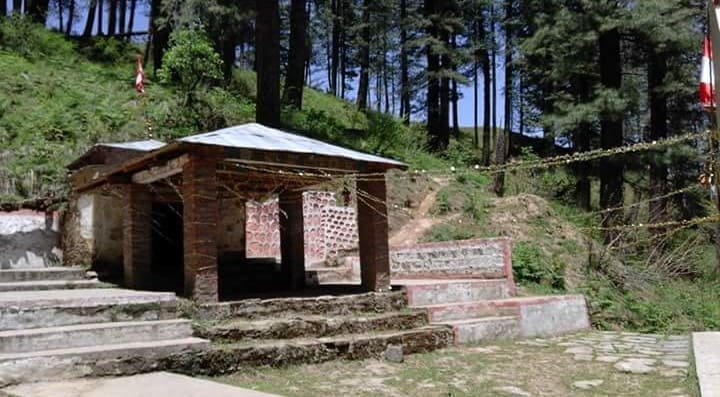
Location: Subhai Village, Joshimath, Chamoli District, Uttarakhand
As the journey progresses, travellers reach Bhavishya Badri, situated in the picturesque village of Subain. This temple is revered as the ‘Badri of the Future‘ and is believed to be the place where Lord Vishnu will be worshipped in the future. With its mystical ambience and panoramic views of the Himalayas, Bhavishya Badri captivates the hearts of all who visit, leaving them in awe of its divine aura.
Legend of Bhavishya Badri
According to popular belief, at the end of the Kalyug era, when the world approaches its end and significant ecological changes occur, the famous Nar and Narayan peaks, which stand as the backdrop to the Badrinath Dham temple, will collapse into each other. This event will block the path leading to the Badrinath temple, rendering it inaccessible for future pilgrims. It is said that during this period, people will instead visit the Bhavishya Badri Dham to offer their prayers and perform rituals.
4. Vridha Badri: The Ancient Shrine
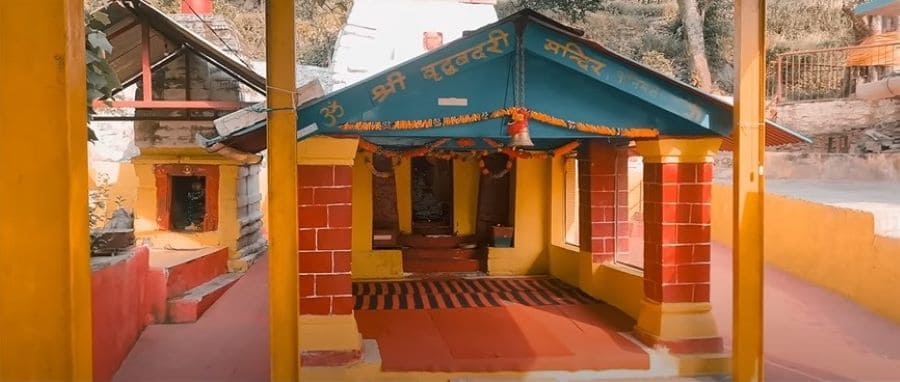
Location: Joshimath, Chamoli District, Uttarakhand
Next on the itinerary is Vridha Badri, nestled in the quaint village of Animath (1,380 meters), which is located at a comfortable distance of 7 km from Joshimath. This ancient temple is dedicated to Lord Vishnu in his manifestation as an old man (Vridha). Surrounded by verdant valleys and alpine meadows, Vridha Badri enchants visitors with its rustic charm and spiritual significance, offering a glimpse into the rich heritage of Uttarakhand.
Legend of Vridha Badri
According to mythology, the sage Narad undertook rigorous penance in this area to seek the favour of the lord. Impressed by his devotion, Lord Vishnu appeared before him in the guise of an elderly man. To honour the deity, Narad chose to install an idol depicting Lord Vishnu in his elderly form. Many years later, it is believed that Adi Shankaracharya discovered this image here and reinstated it within the temple’s precincts.
5. Adi Badri: The First Badri
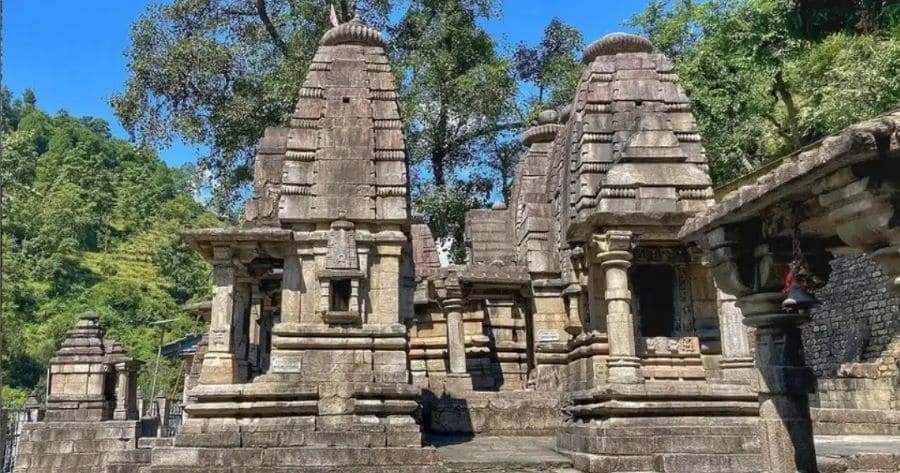
Location: Adibadri, Karanprayag, Chamoli District, Uttarakhand
The final stop on the Panch Badri pilgrimage is Adi Badri, located near the confluence of the Alaknanda and Pindar rivers. Believed to be the site of the original Badrinath Temple, Adi Badri is a cluster of 16 ancient temples dating back to the Gupta period. Among this group of temples is the Narayan temple which enshrines a gleaming black idol of Lord Vishnu which stands 3 feet tall. This place is located at a distance of 18 km from Karnaprayag. Set amidst rolling hills and lush orchards, Adi Badri mesmerizes travellers with its ancient architecture and serene ambience, providing a fitting conclusion to the sacred journey.
Legend of Adi Badri
Legend has it that Adi Badri served as the permanent abode of Lord Vishnu during the Satya, Treta, and Dvapara Yugas before relocating to Badrinath for the Kali Yuga. During times when pilgrims encounter difficulties reaching the main Badrinath Dham shrine due to weather conditions or road blockages, devotees often visit Adi Badri to fulfil their worship rituals.
Experiencing the Journey:
The journey through the Panch Badri circuit is not just about visiting temples; it’s about immersing oneself in the spiritual essence of the Himalayas. From scenic treks through dense forests to soul-stirring prayers at ancient shrines, every moment of the journey is filled with divine grace and mystical energy. Whether you’re a devout pilgrim or an adventurous traveller, the Panch Badri pilgrimage offers an experience that transcends the ordinary and connects you with the divine.
In conclusion, the Panch Badri Yatra circuit in Uttarakhand is more than just a pilgrimage; it’s a transformative journey of the soul. With its sacred temples, breathtaking landscapes, and rich cultural heritage, Panch Badri beckons travellers to embark on a quest for spiritual enlightenment and inner peace. So, pack your bags, lace up your boots, and embark on this sacred journey to discover the divine essence of the Himalayas with Panch Badri.
Also Read: Panch Kedar Yatra


